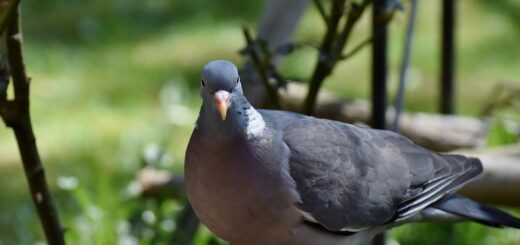Redwing
The Redwing: A Fascinating Species
Redwings are a species of bird that are widely distributed across the Northern Hemisphere, with populations found in Europe, Asia, and North America. These striking birds are known for their distinctive red patches on their wings, which give them their name. In this article, we will explore the fascinating world of the redwing, including their habitat, habits, and conservation status.
Physical Characteristics
The redwing is a medium-sized thrush, with a length of around 20 cm and a wingspan of 33-34 cm. They are easily recognized by the bright red patches on their wings, which are especially visible during flight. The rest of their plumage is a mixture of brown, black, and white, with a speckled appearance. The males and females of the species are quite similar in appearance, although the males are generally slightly larger and more brightly colored.
Redwings have a distinctive call, which is a high-pitched, melodious warble that is often heard in the early morning and evening. They are also known for their beautiful song, which is a series of rich, flute-like notes that can be heard throughout their breeding season.
Habitat and Distribution
Redwings are found in a wide range of habitats, including woodlands, scrublands, and moorlands. They are migratory birds, and their distribution varies throughout the year. In the summer, they breed in the northern parts of their range, including Scandinavia, Iceland, and parts of Russia. In the winter, they migrate south to escape the harsh conditions of their breeding grounds, with populations found as far south as the Mediterranean and North Africa.
One of the most remarkable aspects of the redwing’s habitat is its ability to thrive in urban environments. In recent years, redwings have increasingly been seen in parks and gardens in cities and towns, where they find ample food and shelter. This adaptability has helped them to maintain healthy populations in the face of habitat loss and other threats.
Behavior and Diet
Redwings are primarily insectivorous, feeding on a wide variety of insects, worms, and other small invertebrates. They are also known to eat berries and fruit, particularly during the winter months when their preferred food sources are scarce. They forage for food by hopping along the ground, using their sharp beaks to probe for insects and other prey.
During the breeding season, redwings are territorial birds, with males defending their nesting sites from other males. They build cup-shaped nests from twigs, grass, and mud, which are typically located in shrubs or low trees. The females lay 4-5 eggs, which they incubate for around two weeks. Both parents share the responsibility of feeding the chicks until they are ready to fledge.
Conservation Status
While the overall population of redwings is currently stable, there are some concerns about their long-term survival. The destruction of their natural habitat, particularly in the form of deforestation and urbanization, is a major threat to their populations. Additionally, climate change is also having an impact on the redwing, with changes in temperature and precipitation affecting their breeding and migration patterns.
Conservation efforts are underway to protect the redwing and ensure their continued survival. These efforts include the creation of protected areas, the restoration of degraded habitats, and the implementation of sustainable land management practices. By working together to address these threats, we can help to ensure that the redwing remains a familiar sight in our skies for generations to come.
Conclusion
The redwing is a fascinating and beautiful bird that plays an important role in the ecosystems where it is found. With its striking appearance, melodious song, and adaptability to different habitats, the redwing is a species that captures the imagination of birdwatchers and nature enthusiasts around the world. By learning more about these remarkable birds and supporting efforts to protect them, we can help to ensure that they continue to brighten our days for years to come.
